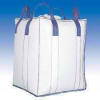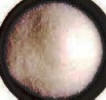| Anmol Chemicals is the pioneer manufacturers of Potassium Gluconate, Pharmaceutical Excipients Food & Flavor chemicals in India. We offer Halal and Kosher Potassium Gluconate made in an ISO9001, ISO22000 (FSSC22000) cGMP and GLP certified facility. Our group has several manufacturing facilities spread across the world, supported by toll manufacturers and representatives in UAE, Europe, USA, China and has several associated manufacturing facilities spread across India. All the Information on Physics, Chemistry, Applications, Uses and Technology on Manufacture of Potassium Gluconate is in these pages. |
| The units have one or more of the certifications like FDA GMP, ISO 9001, ISO 22000, HACCP, REACH, Kosher & Halal |
Potassium Gluconate USP Pure FCC Food Grade Manufacturers
Potassium Gluconate CAS Number 299-27-4, EINECS EC Number 206-074-2, HS Code ---**; Molecular Weight 234.25, Molecular Formula: C6H11KO7
SDS GHS MSDS of Potassium Gluconate of Manufacturers Suppliers Exporters
Arabic مصنعي غلوكونات البوتاسيوم
Spanish Gluconato de potasio Fabricantes
Portuguese Fabricantes de Gluconato de Potássio
French Fabricants de gluconate de potassium
Dutch Fabrikanten van kaliumgluconaat
German Hersteller von Kaliumgluconat
Italian Produttori di gluconato di potassio
Potassium Gluconate USP
C6H11KO7(anhydrous) -- 234.25
d-Gluconic acid, monopotassium salt.
Monopotassium d-gluconate -- [CAS Number 299-27-4].
Monohydrate 252.26 -- [CAS Number 35398-15-3].
Potassium Gluconate is anhydrous or contains one molecule of water of hydration. It contains not less than 97.0 percent and not more than 103.0 percent of C6H11KO7,
calculated on the dried basis.
Label it to indicate whether it is anhydrous or the monohydrate.
Identification:
A: Infrared Absorption.
B: It responds to the flame test for Potassium.
C: It responds to Identification test B for Gluconate under Calcium Gluconate.
Loss on drying: Dry it in vacuum at 105C for 4 hours: the anhydrous form loses not more than 3.0% of its weight, and the monohydrate loses between 6.0% and 7.5% of its
weight.
Heavy metals: Dissolve 1 g in 10 mL of water, add 6 mL of 3 N hydrochloric acid, and dilute with water to 25 mL: the limit is 0.002%.
Reducing substances: Transfer 1.0 g to a 250-mL conical flask, dissolve in 10 mL of water, and add 25 mL of alkaline cupric citrate TS. Cover the flask, boil gently for
5 minutes, accurately timed, and cool rapidly to room temperature. Add 25 mL of 0.6 N acetic acid, 10.0 mL of 0.1 N iodine VS, and 10 mL of 3 N hydrochloric acid, and
titrate with 0.1 N sodium thiosulfate VS, adding 3 mL of starch TS as the endpoint is approached. Perform a blank determination, omitting the specimen, and note the
difference in volumes required. Each mL of the difference in volume of 0.1 N sodium thiosulfate consumed is equivalent to 2.7 mg of reducing substances (as dextrose):
the limit is 1.0%.
Assay:
Potassium stock solution— Dissolve 190.7 mg of potassium chloride, previously dried at 105C for 2 hours, in water. Transfer to a 1000-mL volumetric flask, dilute with
water to volume, and mix. Transfer 100.0 mL of this solution to a 1000-mL volumetric flask, dilute with water to volume, and mix. This solution contains 10 µg of
potassium (equivalent to 19.07 µg of potassium chloride) per mL.
Standard preparations— To separate 100-mL volumetric flasks transfer 10.0, 15.0, and 20.0 mL, respectively, of Potassium stock solution. To each flask add 2.0 mL of
sodium chloride solution (1 in 5) and 1.0 mL of hydrochloric acid, dilute with water to volume, and mix. The Standard preparations contain, respectively, 1.0, 1.5, and
2.0 µg of potassium per mL.
Assay preparation— Transfer about 180 mg of Potassium Gluconate, accurately weighed, to a 1000-mL volumetric flask, add water to volume, and mix. Filter a portion of
the solution. Transfer 5.0 mL of the filtrate to a 100-mL volumetric flask, add 2.0 mL of sodium chloride solution (1 in 5) and 1.0 mL of hydrochloric acid, dilute with
water to volume, and mix.
Procedure— Concomitantly determine the absorbances of the Standard preparations and the Assay preparation at the potassium emission line of 766.5 nm, with a suitable
atomic absorption spectrophotometer equipped with a potassium hollow-cathode lamp and an air–acetylene flame, using water as the blank. Plot the absorbance of the
Standard preparation versus concentration, in µg per mL, of potassium, and draw the straight line best fitting the three plotted points. From the graph so obtained,
determine the concentration, in µg per mL, of potassium in the Assay preparation. Calculate the weight, in mg, of C6H11KO7 in the Potassium Gluconate taken by the
formula:
20C(234.25 / 39.10)
in which C is the concentration, in µg per mL, of potassium in the Assay preparation, 234.25 is the molecular weight of potassium gluconate, and 39.10 is the atomic weight of potassium.
Potassium Gluconate FCC Food Grade
D-Gluconic Acid, Monopotassium Salt; Monopotassium DGluconate
C6H11KO7 -- Formula wt, anhydrous 234.25
C6H11KO7·H2O -- Formula wt, monohydrate 252.26
CAS: anhydrous [CAS Number 299-27-4]
CAS: monohydrate [CAS Number 35398-15-3]
DESCRIPTION
Potassium Gluconate occurs as a white or yellow-white, crystalline powder or granules. It is anhydrous or the monohydrate. It is freely soluble in water and in glycerin,
slightly soluble in alcohol, and insoluble in ether.
Function: Nutrient; sequestrant.
REQUIREMENTS
Indicate whether it is anhydrous or the monohydrate.
Identification:
A. A sample responds to the flame test for Potassium.
B. Dissolve a quantity of sample in water, heating in a water bath at 60° if necessary, to obtain a Test Solution containing 10 mg/mL. Similarly, prepare a Standard
Solution of USP Potassium Gluconate Reference Standard in water, diluting to 10 mg/mL. To prepare a Spray Reagent, dissolve 2.5 g of ammonium molybdate in about 50 mL
of 2 N sulfuric acid in a 100-mL volumetric flask, add 1.0 g of ceric sulfate, swirl to dissolve, dilute with 2 N sulfuric acid to volume, and mix. Apply separate 5-L
portions of the Test Solution and the Standard Solution on a suitable thin-layer chromatographic plate, coated with a 0.25-mm layer of chromatographic silica gel, and
allow to dry. Develop the chromatogram in a solvent system consisting of a 50:30:10:10 mixture of alcohol, water, ammonium hydroxide, and ethyl acetate until the solvent
front has moved about three-fourths of the length of the plate. Remove the plate from the chamber, and dry at 110C for 20 min. Allow to cool, and spray with Spray Reagent.
After spraying, heat the plate at 110° for about 10 min. The principal spot obtained from the Test Solution corresponds in color, size, and Rf value to that obtained
from the Standard Solution.
C. The infrared absorption spectrum of a mineral oil dispersion of the sample, previously dried, exhibits relative maxima at the same wavelengths as those of a similar
preparation of USP Potassium Gluconate Reference Standard.
Assay: Not less than 98.0% of C6H11KO7, calculated on the dried basis.
Lead: Not more than 2 mg/kg.
Loss on Drying: Anhydrous: Not more than 3.0%; Monohydrate: Between 6.0% and 7.5%.
Reducing Substances: Not more than 1.0%.
TESTS
Assay: Transfer about 175 mg of sample, accurately weighed, into a clean, dry 200-mL Erlenmeyer flask; add 75 mL of glacial acetic acid; and dissolve by
heating on a hot plate. Cool, add quinaldine red TS, and titrate with 0.1 N perchloric acid in glacial acetic acid, using a 10-mL microburet, to a colorless endpoint.
Each milliliter of 0.1 N perchloric acid is equivalent to 23.42 mg of C6H11KO7. Caution: Handle perchloric acid in an appropriate fume hood.
Lead: Determine as directed in the Flame Atomic Absorption
Spectrophotometric using a 10-g sample.
Loss on Drying: Determine as directed under Loss on Drying, drying a sample in vacuum at 105C for 4 h.
Reducing Substances: Transfer about 1 g of sample, accurately weighed, into a 250-mL Erlenmeyer flask, dissolve it in 10 mL of water, add 25 mL of alkaline cupric
citrate TS, and cover the flask with a small beaker. Boil gently for exactly 5 min, and cool rapidly to room temperature. Add 25 mL of a 1:10 solution of acetic acid,
10.0 mL of 0.1 N iodine, 10 mL of 2.7 N hydrochloric acid, and 3 mL of starch TS, and titrate with 0.1 N sodium thiosulfate to the disappearance of the blue color.
Calculate the weight, in milligrams, of reducing substances (as D-glucose) by the formula 27(V1N1 − V2N2), in which 27 is an empirically determined equivalence
factor for D-glucose; V1 and N1 are the volume and normality, respectively, of the iodine solution; and V2 and N2 are the volume and normality, respectively, of the
sodium thiosulfate solution.
We also offer Potassium Alum, Potassium Ascorbate, Potassium Glycerophosphate, Potassium Orotate, Potassium Propionate, Potassium Saccharate, Potassium Sorbate, Potassium Stearate.
Potassium Gluconate Manufacturers:
Anmol Chemicals
S-8, SARIFA MANSION, 2ND FLANK ROAD, CHINCHBUNDER, MUMBAI 400009, INDIA
TEL: (OFFICE) 91-22-23770100, 23726950, 23774610, 23723564. FAX: 91-22-23728264
e-mail: anmolc@mtnl.net.in
Exports to USA, Canada, UAE, Dubai, South Africa, Tanzania, Kenya, Nigeria, Egypt, Uganda, Turkey, Mexico, Brazil, Chile, Argentina, Europe Netherlands, Italy, Spain, Germany, Portugal, France, Malaysia, Indonesia, Thailand, Korea, Japan, etc.
Copyright and Usual Disclaimer is Applicable. 2 February, 2022




